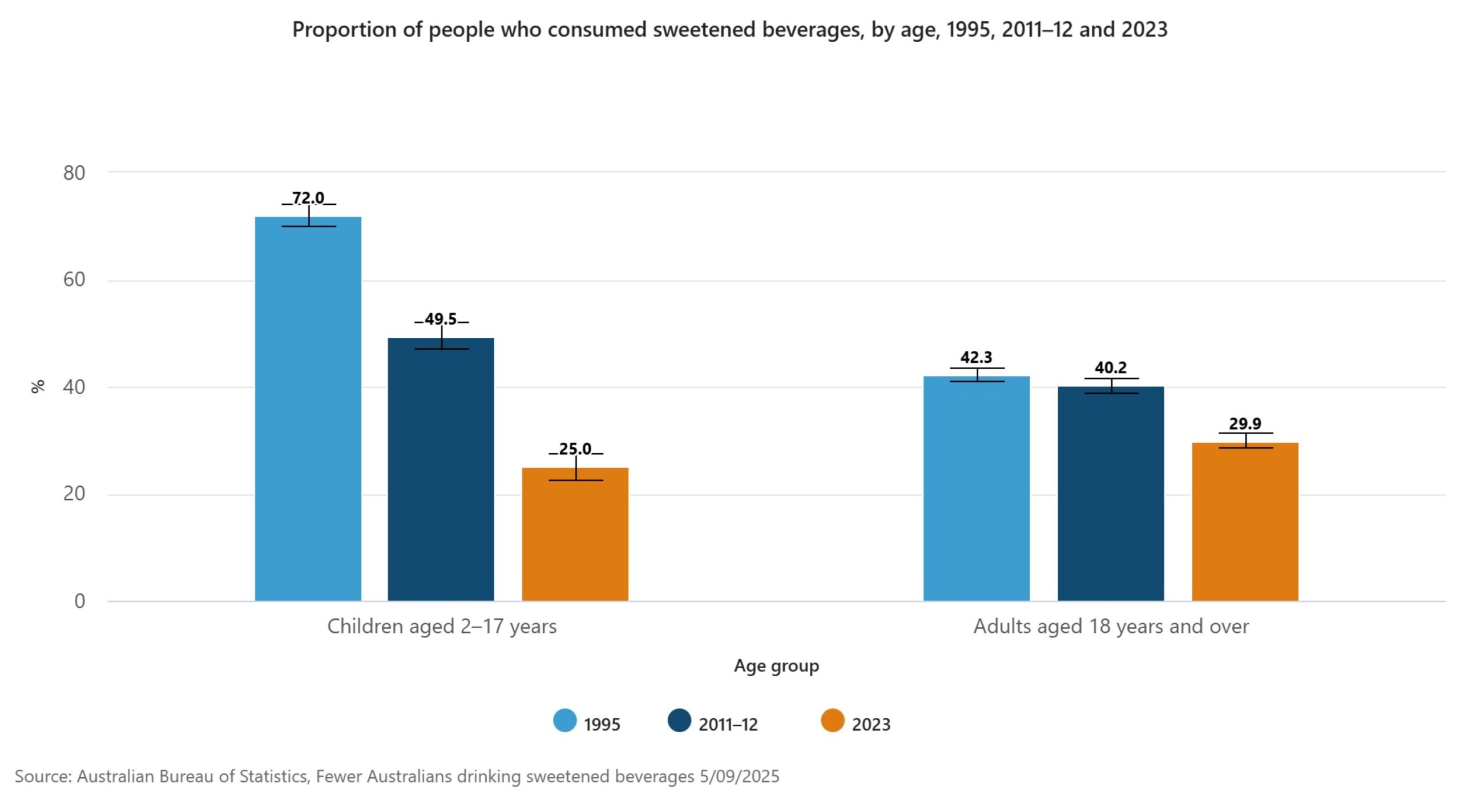Fewer Australians are drinking soft drinks than a decade ago, but we’ve upped our coffee intake by almost 20 percent.
New data released today by the Australian Bureau of Statistics (ABS) showed the proportion of people who drank sweetened beverages fell from 42.2 percent in 2011–12, to 28.9 percent in 2023, while over that time adults increased their daily caffeine intake from 158 mg to 186 mg.
ABS Head of Health Statistics James Eynstone-Hinkins said the data provided a comprehensive snapshot of Australia’s nutrition, with new insights into what we’re eating, our energy intakes and the types of diets we followed.
“For example, nearly three in four children drank sweetened beverages in 1995,” Mr Eynstone-Hinkins said.
“This fell to one in four children in 2023.”
He said sweetened beverages were an example of “discretionary choices” in our diets, which were food and drinks high in energy, saturated fat, salt or sugar and has low levels of essential nutrients.
Mr Eynstone-Hinkins said one third (31.3 percent) of daily energy intake came from discretionary food and drinks in 2023, down from 35.4 percent in 2011–12.
“The leading foods contributing to discretionary energy came from cereal-based mixed dishes, which includes foods like takeaway burgers and pizza.
“This was also the most popular food group, eaten by more than half, or 52 percent, of people on a typical day.”
He said the survey also offered insights into other factors that influenced what Australians ate and drank.
“Over one in eight (13.2 per cent) households experienced food insecurity in the last 12 months, including 34 percent of lone parent family households and 27.8 percent of group households.”
Mr Eynstone-Hinkins said one in four (24.9 percent) of people 15 years and over were following a diet and among people on a diet, males were most likely to follow an energy restriction diet (34.8 percent), while females were most likely to follow a food avoidance diet (47.1 percent).
He said the data also found the daily intake of free sugars made up 8.2 percent of total energy, within the World Health Organization recommendation of less than 10 per cent, and sodium was just under 2400 mg, equivalent to around one teaspoon of salt.









